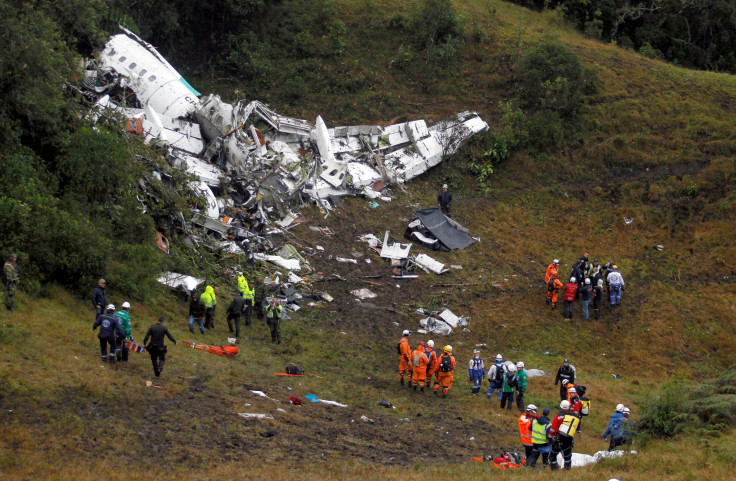How Safe Is Flying? After Chapecoense Plane Crash In Colombia, A Look At Flight Fatality Rates

Plane crashes, by their very nature, tend to capture headlines and sympathy from anyone who has ever boarded a flight and had thoughts of disaster flash through their imaginations. The Monday night wreck in Medellin, Colombia, that killed nearly all of the 81 passengers on board is no different.
But if the news leaves you with fresh worries about your upcoming holiday travel plans, take solace: All things considered, plane crashes and fatalities are an exceedingly uncommon affair. They’re so rare that some airline industry executives say that you’re more likely to die in the airport than on the plane itself.
There have been 88 plane crashes in 2016 so far — slightly fewer than the 122 crashes experienced in both 2015 and 2014, according to the Bureau of Aircraft Accidents Archives. There have been 373 deaths in 2016 on planes, compared to 898 in 2015 and 1,328 in 2014, the bureau’s data showed. It was unclear Tuesday if the Medellin crash had already been factored into the 2016 total.
Considering the big picture, that’s a low fatality rate compared to other modes of transportation. There are approximately 0.01 deaths per 100 million passenger miles traveled on airplanes, which is a fifth the rate of bus and train accidents and much lower than the rate for cars (0.72 deaths per 100 million passenger miles).
When it comes to being on a flight with any sort of accident, which are not always fatal, just one in 1.2 million people experience the phenomenon, according to the National Transportation Safety Board. That’s a higher rate than the chance you’ll get killed by a shark (one in 3.7 million), but you’re still more likely to get killed by a shark than die in a plane (one in 11 million chance).
And there’s some other generally good news for people who find themselves on the one in 1.2 million planes that crash: 95.7 percent of passengers live to tell the tale.
© Copyright IBTimes 2024. All rights reserved.






















